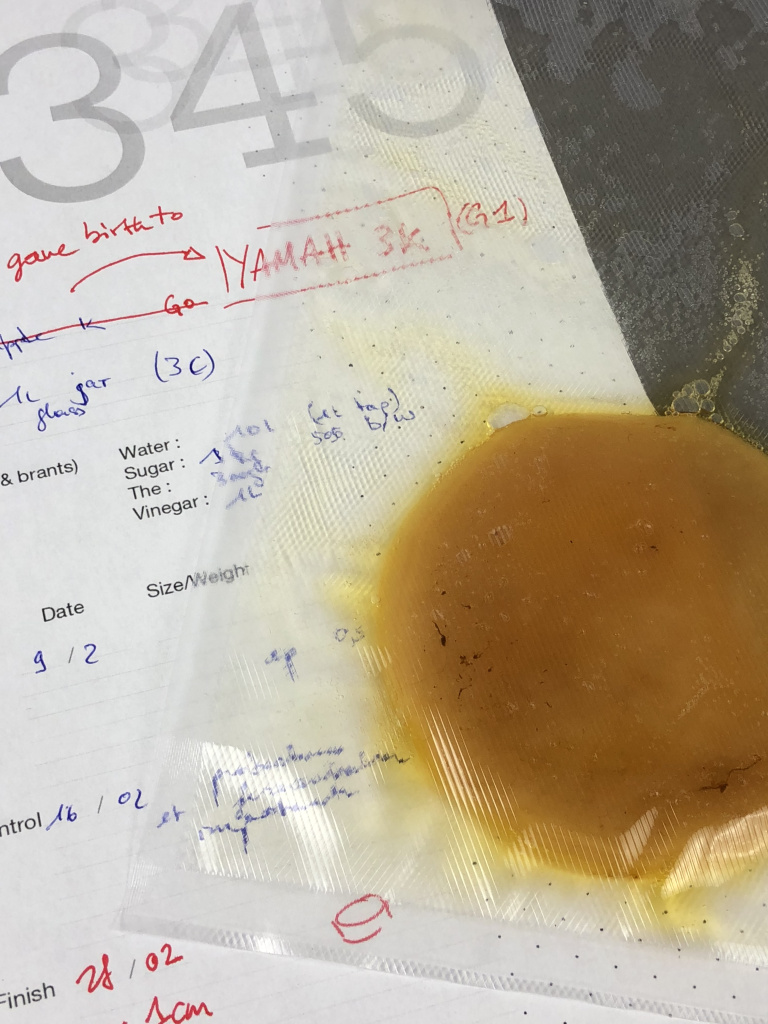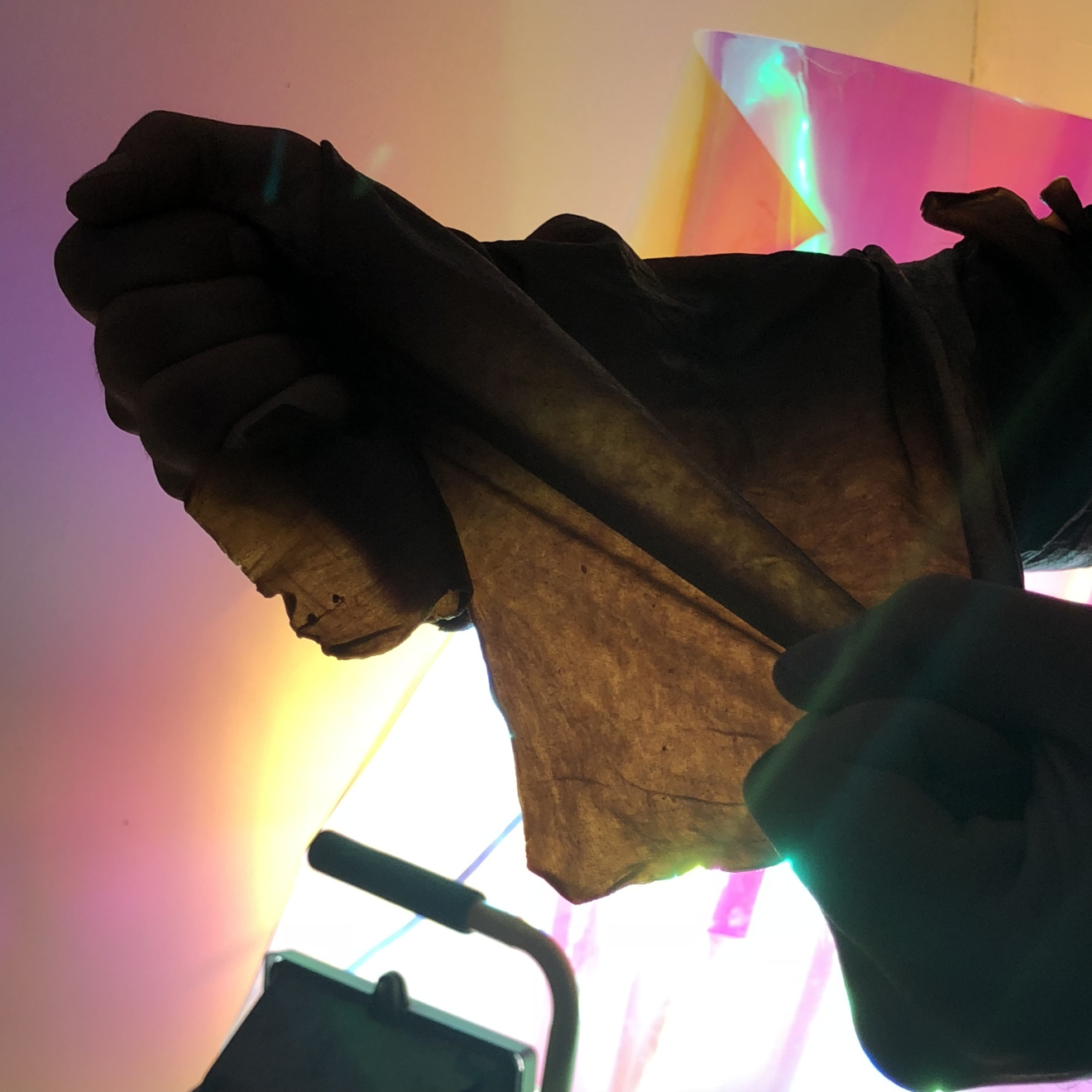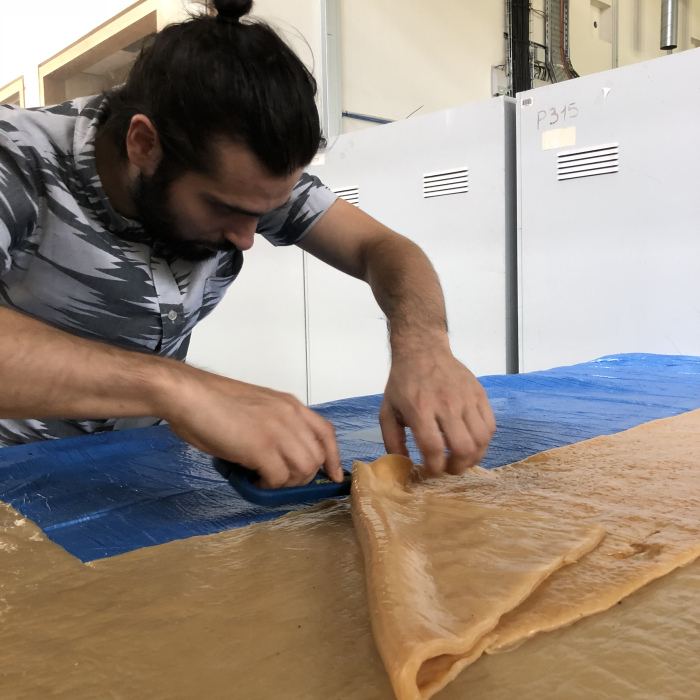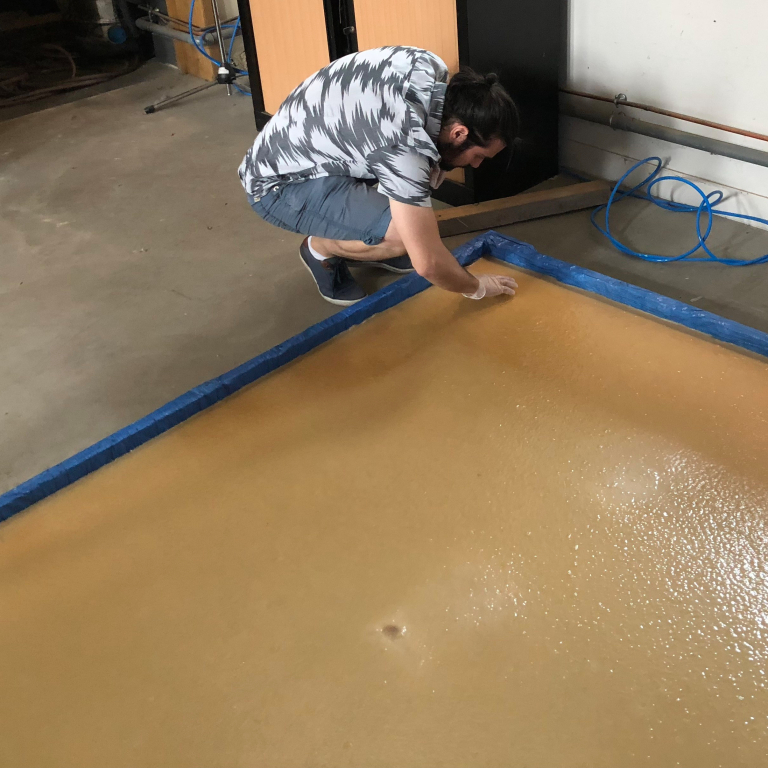We had the pleasure to interview Distributed Design talents and the creatives behind thr34d5 medialab; president and founder Adrien Rigobello and board member Vivien Roussel, who also participated in the Distributed Design Plastic For Good Challenge at the Precious Plastic Basekamp. They collectively answered our questions, delving deep into the philosophy of design and the driving forces behind their practices. We also found out “what is the worst & the best thing about working with kombucha”?
How did your design studio start?
Having worked for two years in computational design, arts, architecture and fashion, we decided in 2019 to take a turn as medialab, and as an NGO. While our competencies could be desired for business oriented projects, we found ourselves better aligned in a mission to help society achieve altogether the UN SDGs by new media – that is to share common narratives and semiotics for the post-anthropocene.
Why did you choose to be part of Distributed Design (DDMP)?
We share the same values: thinking about conditions for sharing and distributing knowledge in the digital epoque, in relation to the territory. The anchorage of DDMP in the Fab City Global Initiative is actually what contributes to building a sense of the city, of the landscape in both its virtual and actual expression. Actually, we tried to contour this thinking in the article Connecting Terroir – Design Practices in the Fab City.
Do you follow any particular philosophers theories?
thr34d5 medialab is a coherent mix of influences. From arts, especially procedural art, post-structuralism, and arte povera. Anthropology is definitely a strong interest. Oral traditions most of all! We can not avoid to mention the economic understanding of territories by Pierre-Noel Giraud. To literally answer to your question, Bernard Stiegler, Zygmunt Bauman, and Emmanuel Levinas are definitely some of the most prominent influences to us. At large, what we tend to refer to engaged theories.

You’re a media lab – how do we communicate effectively to create authentic behaviour change rather than a trend?
Thinking the post-anthropocene is a massive project that anchors deeply in our ways to define our identities to the world. Beyond our relation to nature, we consider the project of the post-anthropocene to be a post-structuralist one: give space for the local expression of culture. As an NGO we tend to focus more on the social urgencies than the environmental ones as this seems to be a condition sine qua non to build up a resilient model, beyond short term bandaid. Hence our focus on understanding the conditions for a radical inclusion. Our work aims at giving citizens the tools (of which, knowledge) to express their identities through crafts and modes of sociability. This is how we are approaching resiliency.
What would your advice be to a citizen born 50 years from now?
In 50+30 years (so by the time this person will have a large impact over the world) it will be the time of massive changes in terms of resources and economic disparities – as the last demographic transition which will be Africa’s is foreseen then. No chance to predict without some myopia, but we hope that by then liquid modernity will not be synonymous anymore of a precarious and constant displacement of identities, but rather that the very citizenship will become liquid, adaptive and listening to its milieu. Collage all the way!
What is an open-design methodology?
Open design can relate to “open sourced design” with whatever intent. We prefer to relate to it as a form of knowledge sharing with an inclusive intent. An open design is aiming for the user of such to build their know how. Car tuning, recipes for food, crafts, earth-based architectures. The virtual knowledge goes through you, and actualises thanks to you. One constructs their way of interacting with the other by being the vehicle for knowledge, by twisting and fine tuning this heritage to slightly contribute to it.
How would you describe kombucha to someone who had never heard of it before?
It is pure wood, that is soft. Or rather cellulose, a thin matrice of it. This biomaterial is the result of a symbiosis between yeasts and bacteria, which is historically most likely to be due to humans (about 2000y back). It smells. Oh yes, it often smells like vinegar. But we made it into smelling sweet, or rather as a soft mix with a black tea smell. Sometimes sticky, always other, it is this kind of materials that triggers a feeling of wonder. Yes, homo faber does not yet know all of the materials and milieux that exist!
What is the best thing and the worst thing about working with Kombucha?
The wonder starts not by touching the dried pellicle, but rather earlier as observing for hours the rapid development of the pellicles. And the mycelial expression of the yeasts, stalactites. And the trapped CO2 underneath the spongy pellicle. And the wet pellicle, just out of its bath for the first time, it has this sweet skin-like feeling. Gross? We say beautiful. There is a world there, there are lives there. What a wonder to produce our own material. Sometimes attracts flies in the workshop, which is the worst!
What have you learnt through working with Kombucha?
Patience. Discipline. There is a necessary discussion with the material. Kombucha does not do what we want, it rather agrees to collaborate with us. This is a ménage à trois kind of deal: kombucha is ours as long as we are theirs. We have to respect its boundaries and be respectful to its agenda. What is the goal of your work and what kind of impact would you like to make in the world?
Our mission is to foster social resilience. As such, we focus on auto-determination, challenging perspectivism, favouring situated knowledge. We gather practically into thinking and making at the intersection between crafts and open source. This focus unfolds in a holistic practice: a design research actualising in arts, applied arts, engineering and education.
Yes, all means are good to infuse a novel bottom-up dynamic discourse that goes beyond using nature to serve culture. We hope to foster at the same time social resilience, and some kind of environmental companionship as we seem them as deeply interconnected.

Thank you for the interview! If you are also fascinated by their approach and the secret lives of kombucha, check out thr34d5 medialab at Wikifactory.


